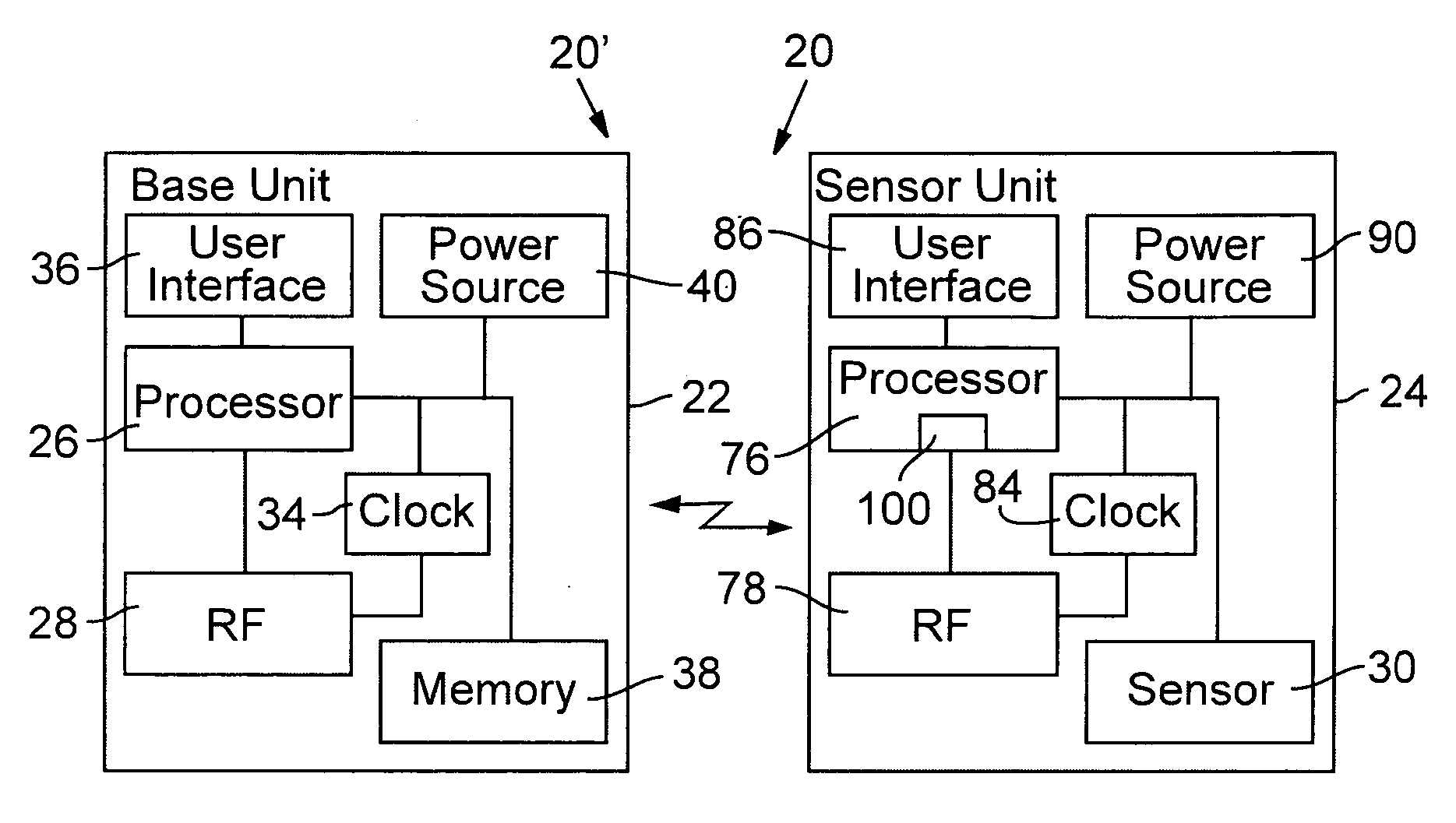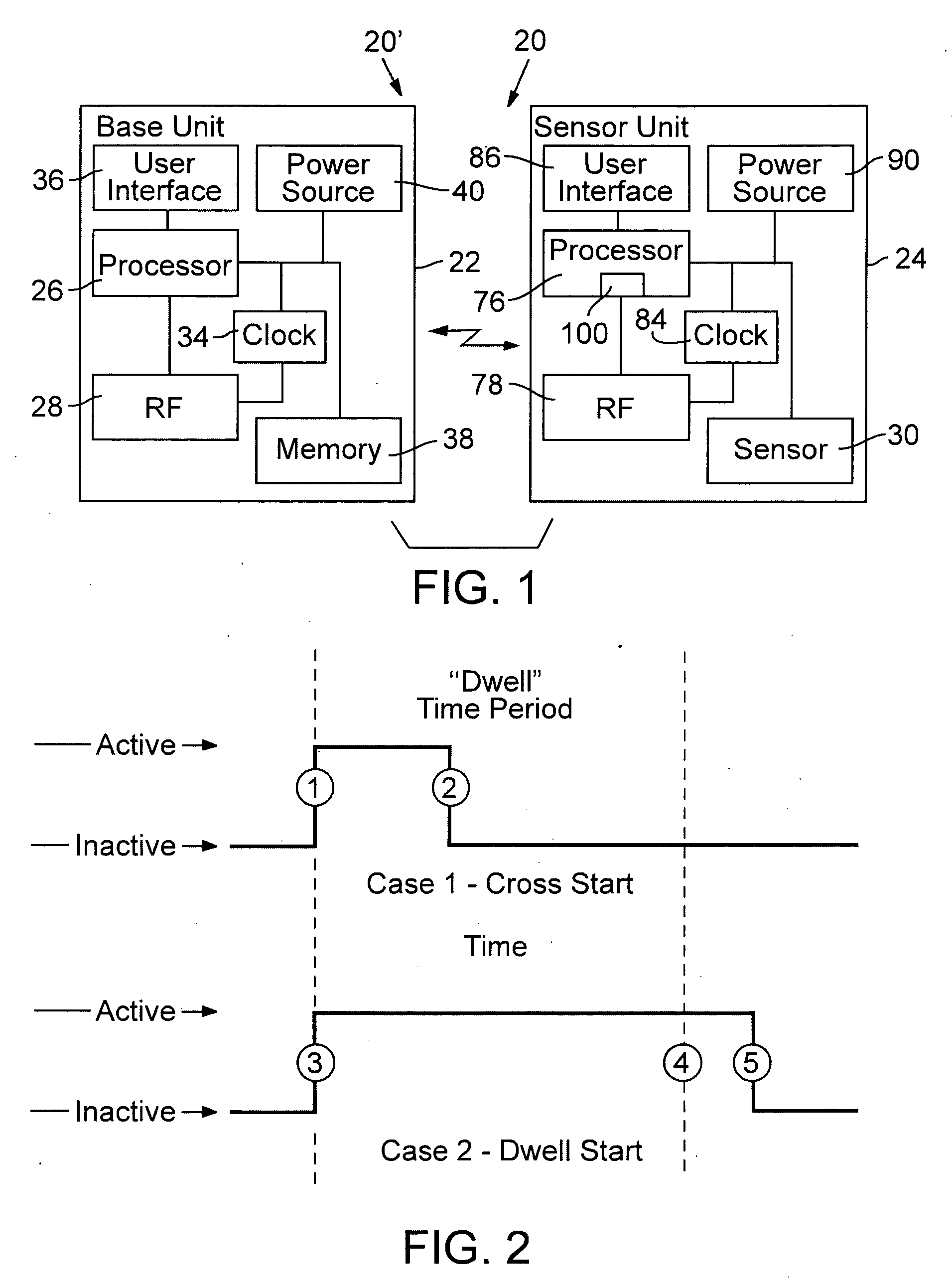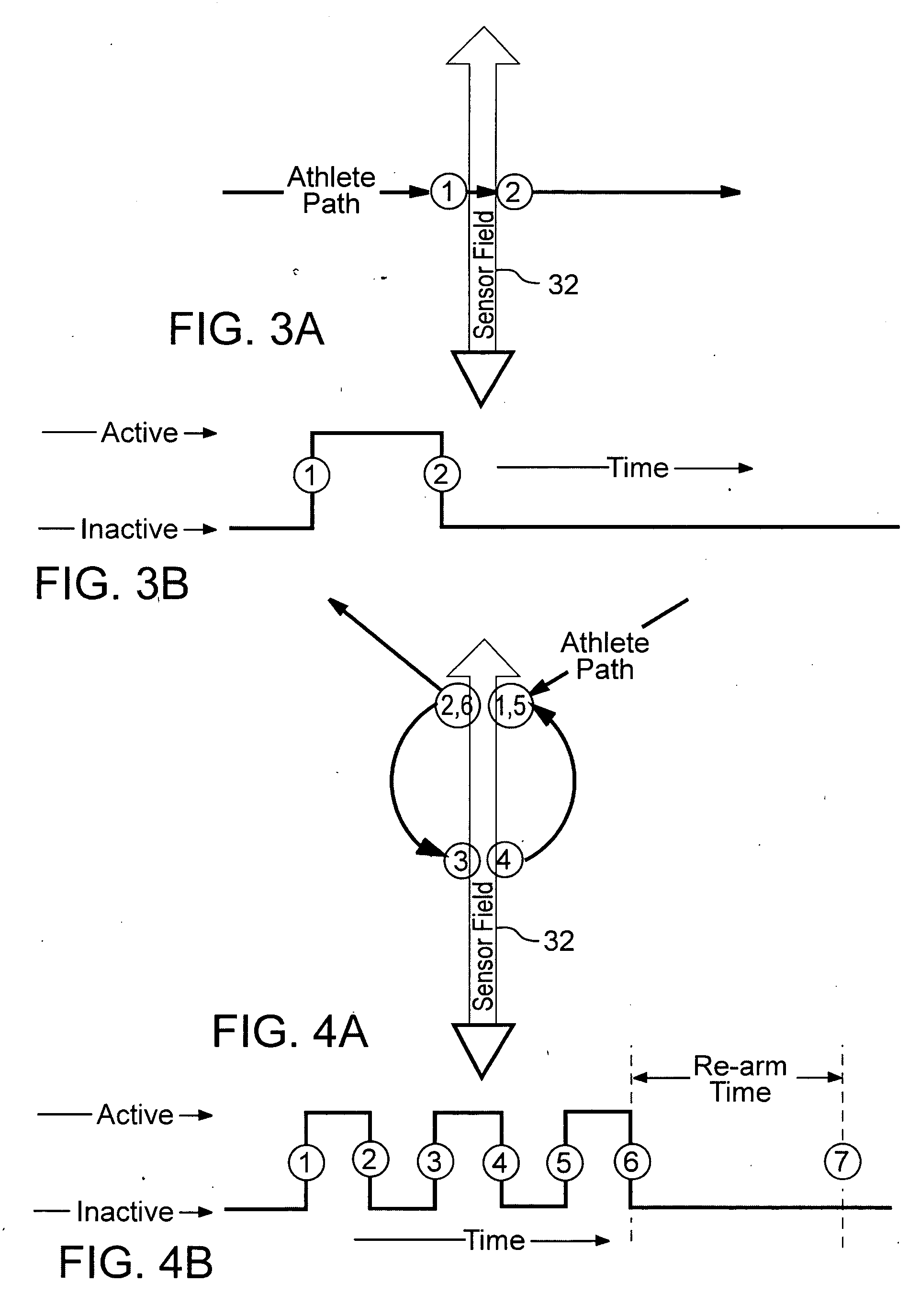Athleticism rating and performance measuring systems
a performance measurement and athlete technology, applied in the field ofathletic rating and related performance measurement systems, can solve the problems of not being determined and rewarded the best athlete, subject to human perception and error inherent, and the method of evaluating and recruiting athletes is usually hit or miss, so as to achieve quick, easy and accurate collection
- Summary
- Abstract
- Description
- Claims
- Application Information
AI Technical Summary
Benefits of technology
Problems solved by technology
Method used
Image
Examples
case 1
[0118] Coach Display Usage
[0119] When a coach is handling the base unit 22, this unit must be in the RF range of all the sensor devices simultaneously. This results from the fact that the base unit will not, in general, be moving between the different sensor devices in the system as it is operating. In order to handle this situation, the RF range 262 for the base unit must reach all the sensors for the system. Note that this does not mean that the sensor units must be able to communicate with each other. This situation is shown in FIG. 7A (B=Base Unit, S1=Sensor Unit 1, S2=Sensor Unit 2). In this layout, the base unit is always able to communicate with each of the sensor nodes.
[0120] The setup of the training drills will vary widely and likely span a fairly sizeable distance in some situations. To handle this variability, the system needs to support an RF range that is sufficiently large to reach all the sensors. As this range grows, the wireless components must increase their tran...
case 2
[0121] Athlete Display Usage
[0122] When an athlete is using the system alone, he or she will generally want the base unit attached to his or her body. Ideally, this could be in a suitable form factor such as a wrist mounted watch or the like. In this configuration, the system can function the same way it does in the first case. However, the added complexity of the RF link and the increase in power usage may be undesirable to support in this situation. Since that athlete will be physically close to the sensor units when the sensor measurements are made, the power of the RF transmissions could be significantly reduced. This would both reduce the system power requirements and reduce the transmitted RF power levels to the state where a simpler RF implementation is possible. This situation is shown in FIG. 7B using the same element names and numbers as in the previous discussion of FIG. 7A.
[0123] The key to this system is that the base unit 24 is located physically close to a sensor uni...
case 3
[0124] Coach and Athlete Display Usage
[0125] In order for both the athlete and the coach to track the timing information, there are several possible implementations. In one implementation, the same architecture as for case 1 to communicate between the coach unit and the senor units could be used. The coach unit could then resend, possibly with a different protocol or with a different RF frequency band, the performance data to the athlete unit for display. Likely the RF performance of the wearable device would only support a simple protocol, operate with a short range, and need to be near the base unit in order to operate successfully. This situation is shown in FIG. 6A using the same element names and numbers as in the previous discussion of FIG. 7A.
[0126] In this case, the base unit 22 is actually operating two RF communication links. The first link is used to communicate with the sensor units much the same way as described in case 1. This link would be implemented for longer-rang...
PUM
 Login to View More
Login to View More Abstract
Description
Claims
Application Information
 Login to View More
Login to View More - R&D
- Intellectual Property
- Life Sciences
- Materials
- Tech Scout
- Unparalleled Data Quality
- Higher Quality Content
- 60% Fewer Hallucinations
Browse by: Latest US Patents, China's latest patents, Technical Efficacy Thesaurus, Application Domain, Technology Topic, Popular Technical Reports.
© 2025 PatSnap. All rights reserved.Legal|Privacy policy|Modern Slavery Act Transparency Statement|Sitemap|About US| Contact US: help@patsnap.com



